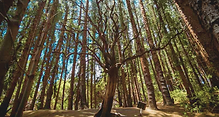
Irazú Volcano
Paragraph
The Irazú Volcano is an active volcano located in the Cordillera Central near Cartago and stands at 11,260 feet tall. It spreads across 500 square kilometers and is surrounded and filled with many rivers that feed into basins such as the Chirripó River, Reventazón River, Sarapiquí River, and Grande de Tárcoles River. Irazú does not have many growing things due to the amount of ash that affected agriculture and livestock from 1962 to 1965 after the first eruption happened in 1723. Its amount of species is diverse, splitting into flora species, which are a group of plants that live in a particular region or period of time, and fauna species, which are animals that live in a particular region or period of time. Some examples of flora species are roses, oak trees, grass, etc., and some examples of fauna species are lions, elephants, butterflies, etc. Both of these species are found all around the volcano. Irazú’s temperature ranges from -3 degrees Celsius to -17 degrees Celsius, with a human but cold climate. It has a dry season from December to April, with a rainy season from May to November. Overall, the Irazú Volcano is a large volcano that has had some eruptions up to this point but continues to be a big tourist spot for the country of Costa Rica.
Pictures

Diego de la Haya crater is a dry, ash-filled crater located in Irazú National Park.

Playa Hermosa Terrace is a flat terrace found on the southern side of the Irazú Volcano

A Volcano Junco is a bird that has a vivid appearance that live in high altitudes and open habitats

The Prusia Sector is located in the Irazú National Park and has many trails, different animals and plants, and a chance to go see the volcano's summit.
.jpeg)
Spiny Green Lizard or the Emerald Swift is a lizard found in Irazú National Park as well as coffee plantations, pastures, and forests.

The Castilleja Irasuensis, also known as the "fire flower," can be found near the rim of the crater.
Citations
Alamy Limited. “(Castilleja Irasuensis) Flowering next to the Crater Rim of Volcano Irazu, 3400m. Costa Rica.” Alamy.com, Alamy images, 2025, www.alamy.com/castilleja-irasuensis-flowering-next-to-the-crater-rim-of-volcano-irazu-3400m-costa-rica-image357516952.html. Accessed 9 Mar. 2025.
Junco, Volcano. “Volcano Junco.” Costa Rica Living and Birding, 2021, birdingcraft.com/wordpress/tag/volcano-junco/. Accessed 9 Mar. 2025.
Sensorial Sunsets. “The Magic Forest of Prusia in Irazú Volcano National Park - SensorialSunsets.” SensorialSunsets, 21 May 2024, www.sensorialsunsets.com/en/the-magic-forest-of-prusia-in-irazu-volcano-national-park/. Accessed 9 Mar. 2025.
to, Contributors. “Mountain in Costa Rica.” Wikipedia.org, Wikimedia Foundation, Inc., 20 Nov. 2004, en.wikipedia.org/wiki/Iraz%C3%BA_Volcano. Accessed 9 Mar. 2025.
to, Contributors. “Species of Reptile.” Wikipedia.org, Wikimedia Foundation, Inc., 8 June 2006, en.wikipedia.org/wiki/Sceloporus_malachiticus. Accessed 9 Mar. 2025.
“Diego de La Haya Crater.” Flickr, Diego de la Haya crater. | The smaller crater, Diego de la H… | Flickr, 9 Mar. 2025, www.flickr.com/photos/suraark/4541983030. Accessed 9 Mar. 2025.
“File:Crater Playa Hermosa Irazu Volcano CRI 01 2020 3672.Jpg - Wikimedia Commons.” Wikimedia.org, 2 Jan. 2020, commons.wikimedia.org/wiki/File:Crater_Playa_Hermosa_Irazu_volcano_CRI_01_2020_3672.jpg. Accessed 9 Mar. 2025.
“Parque Nacional Volcán Irazú - Áreas Protegidas Y Parques Nacionales de Costa Rica.” Areasyparques.com, 2020, areasyparques.com/areasprotegidas/parque-nacional-volcan-irazu/. Accessed 9 Feb. 2025.